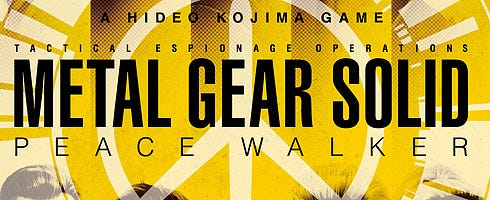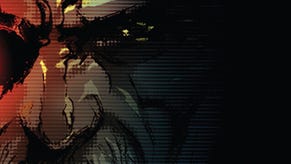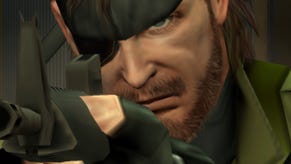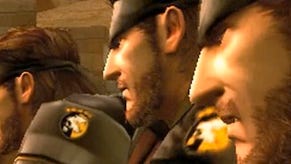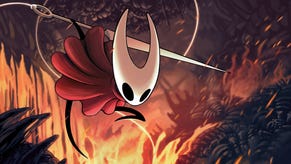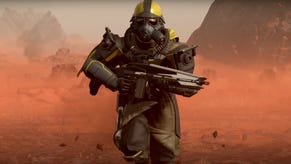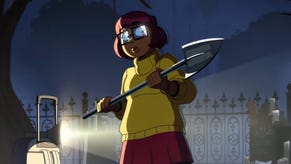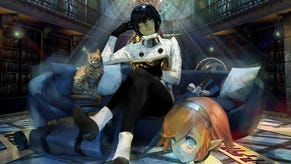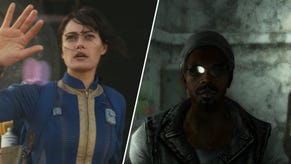Playtest: Why MGS: Peace Walker deserves that Famitsu 40/40
Konami’s Metal Gear Solid: Peace Walker is one of the greatest games I have ever played on the PSP, a system I had all but given up on before spending the best part of a day playing Hideo Kojima’s game at a recent preview event organised by the publisher.
That is the main thing you need to know. Secondly, even after four or five hours of playing and slowly getting into the experience, I was still left with the feeling of having only just scratched the surface of a 30-40-hour marathon I will relish. With Peace Walker there are no concerns at all about, “How am I going to find the time to play through this?” I just will.
The only other thing? June 18.
Many of us already know the game has been given a rare 40/40 score in Japan’s Famitsu. Almost unheard of. This is only the fourteenth game to achieve the accolade, and the first game on PSP to be so honoured. Four separate reviewers each gave the title 10/10. And it is fully justified in the case of MGS: Peace Walker, because this is a game that unashamedly appeals directly to the hardcore demographic.
Fiddly and difficult? Or sophisticated and deep?
Sure, you could dismiss the latest MGS game’s controls as fiddly and difficult at first. And I very nearly did, until I did what so few gamers ever bother to do – I went back to the tutorial for a second time, I checked out the control guide in the manual a few extra times to teach and remind myself how to play the game and I even, to my slight embarrassment, asked a Konami rep at the UK preview event for some hints and tips on how best to get through the first few levels.
And I am glad that I did all of that, because to dismiss this game for having fiddly controls would be the equivalent of dismissing a great book or a memorable movie way too quickly because you found them, “a bit confusing.”
The greatest forms of entertainment always require some work from the gamer (or reader, or viewer). Hideo Kojima understands this, more so than most developers. It's also the reason hardcore gamers dismiss so-called casual gamers for not putting in the basic amount of effort they know is going to reward them with hours and weeks of play and pleasure.
After a few hours of playing, any remaining ‘fiddli-ness’ you might experience with the control set-up is purely down the product designers at Sony (I was playing this on the old-style PSP-3000, which I prefer to the most recently-released PSP Go as I have the fairly large and clumsy fingers of a gentleman). It is nothing at all do to with the sterling efforts of the game designers at Kojima Productions – who have done nothing other than craft a perfect handheld computer game, using the tools Sony has given them to the best of their ability.
A bright future for the PSP
The PSP has unfortunately dropped off many gamers’ (and developers’ and publishers’) radars, purely down the fact that there hasn’t been enough decent, original games on the system in the last year or two to warrant decent support. Yet Famitsu’s fully-justified 40 for Peace Walker is indicative of the potential for a bright future for portable PlayStation gaming.
Famitsu’s reviewers were full of praise for both main play styles in Peace Walker: the single-player and the new co-op modes. And the co-op works well, for sure. It is going to be a huge amount of fun for those groups of mates that are fans of the series already. If you already have an affection for Solid Snake or a love of the home console versions of Konami’s classic then you really need to know that Peace Walker is the definitive version of the game on handheld. Forget Portable Ops; this game is the only portable MGS title that matters.
If you haven't played the PSN demos that have been available for a few months now, then you really should. Give it a go, because while we can explain to you what we liked about the game’s control scheme and the storyline and the action and everything else, the demo sells it. Control-wise, you use the face buttons to move the camera view and you use the analogue nub to change the type of close-quarters combat-attacks you sneakily inflict on your prey.
The first tutorial you play through, to teach you this hand-to-hand combat, is vital. Remember it all. (I didn’t, at first, and had to return to it due to my attention-deficit issues). Basically, it teaches you how to restrain and temporarily knock-out enemies with your bare hands and arms while causing as little noise or disruption as possible. Or, if you are attacking two or more guys, you can throw one of them into another one, which also comes in very handy.
The second tutorial teaches you all about the various weapons in the game and how to use auto- or manual-aim. To enjoy the game, you need to work through these and you really need to remember what you have been shown. And if you forget or get confused, then just go back and learn and try to remember again.
In order to successfully learn how best to sneak up on your enemies you also need to know how to use the on-screen radar, which shows you sound waves from your own footsteps or from the movement of other people or vehicles nearby, as well as your level of camouflage, represented in the form of percentage points. And you also need to reconfigure your brain a little bit to learn to use the D-pad – up for action, down to crouch and left and right to cycle through items and weapon menus.
As for the story, it's bonkers.
Once I’d got a decent handle on the controls, I also quickly realised that the cut-scenes in the game, designed by Ashley Wood, were also something rather special. In that I was enjoying them and looking forward to them. They explained the development of the story well, with their fun and diverting rhythm-action style mini-game elements. They were interactive, interesting, memorable… three things that cut-scenes in games are rarely, if ever, commended for.
Whether you are a long-term fan or Kojima’s sneak-em-up or not, the storyline errs at times towards the ramblings of a crazy man. Even so, it is never anything less than hugely entertaining. You play as Naked Snake (‘Big Boss’) who’s "Militaires San Frontieres" group are hired to help Costa Rica get out of some CIA-related bother back in 1974.
Snake and (series mainstay) Kazuhira ‘Master’ Miller are contacted by a professor called Ramon Galvez, who needs help to deal with unknown armed forces moving into Costa Rica. Galvez knows more than he initially lets on about Big Boss' true identity. The whole thing is set after Metal Gear Solid: Portable Ops but before the original Metal Gear. There’s a ton of missions for you to play through and the game should keep you happily occupied for at least 30 pleasant hours of life.
So, to recap. This is a cracking single-player game for the PSP. One of the best to date, in fact. It’s a bit difficult to get the hand of the controls at first, but worth the effort. Other than that, it’s seriously hard to pick fault with MGS: Peace Walker. I suppose the thing is this – if you want a proper game to get your teeth into for a good amount of time, this is as good a contender for that on any platform so far in 2010. But if you are looking for ten minute chunks of ‘on-the-bus’ gaming then this might well not be for you.
If you do want to play the co-op version, then you will not only be able to select to play as the standard "Jungle Fatigues" Snake, but also as “Battle Dress Snake” or “Sneaking Snake” or “Naked Snake.” Each of which will offer your team tactical advantages in the field. You also need to stick close to your mates, and learn how best to share health, supplies and weapons to get through the missions.
It will be interesting if Konami’s new title manages to kick-start PSP sales a bit in the UK following release on June 18. If you don’t have PSP-owning or Metal-Gear fan mates, then it is still an essential purchase if you like handheld gaming.
Metal Gear Solid: Peace Walker is now available in Japan. It releases in the US and Europe on June 18. Here's hundreds of pictures of it.
